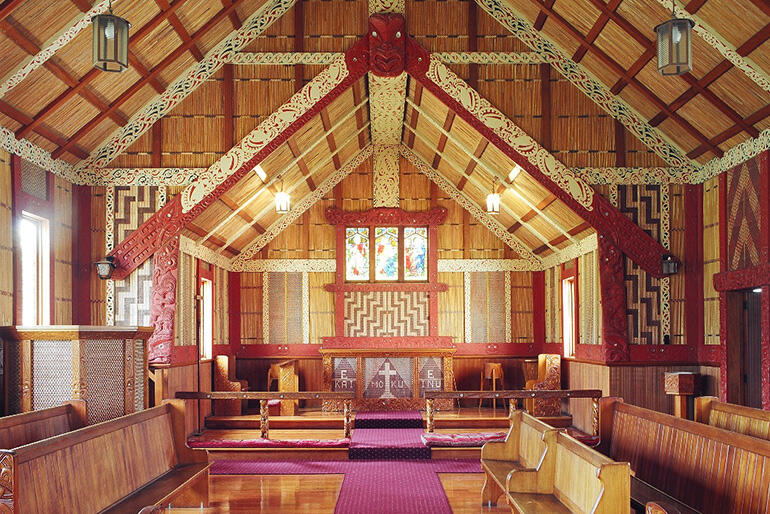
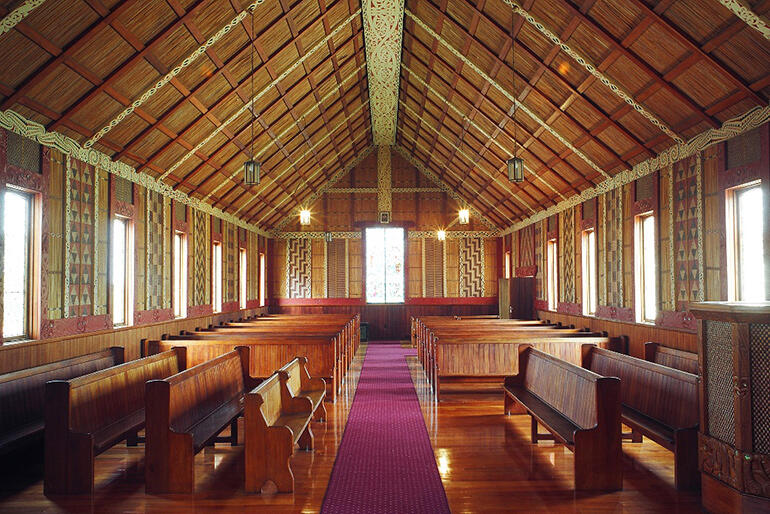
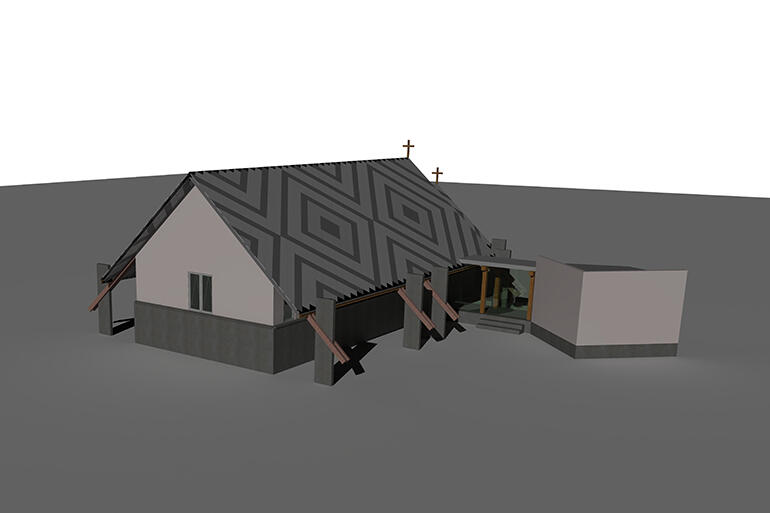
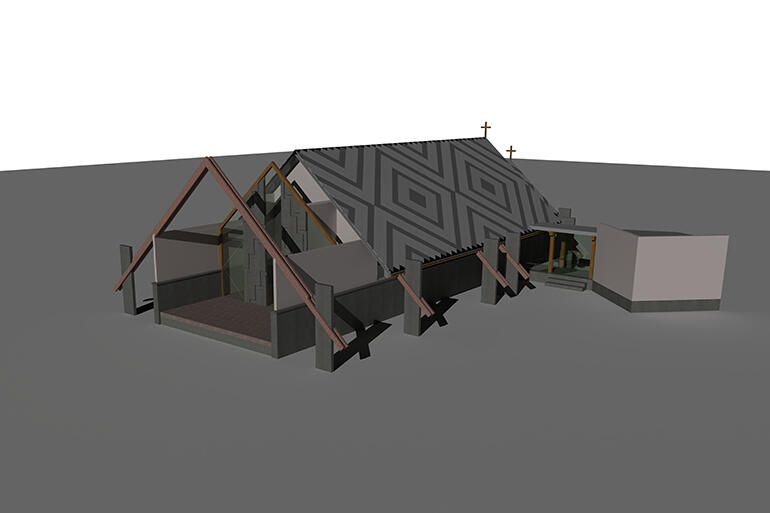
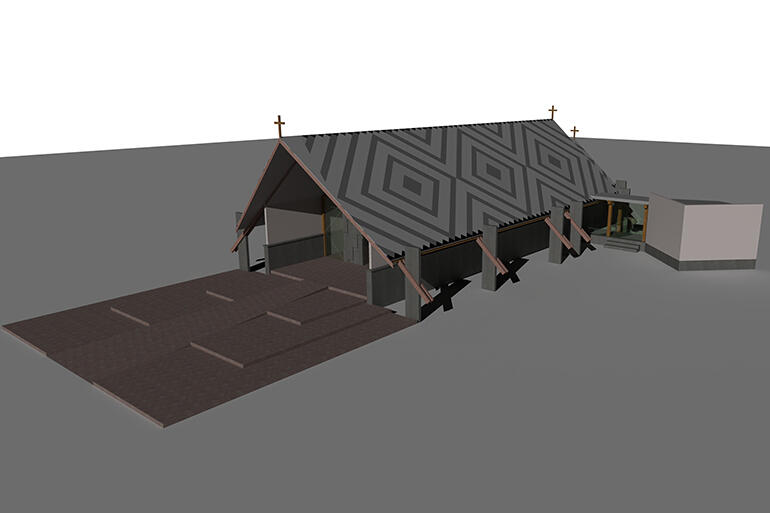
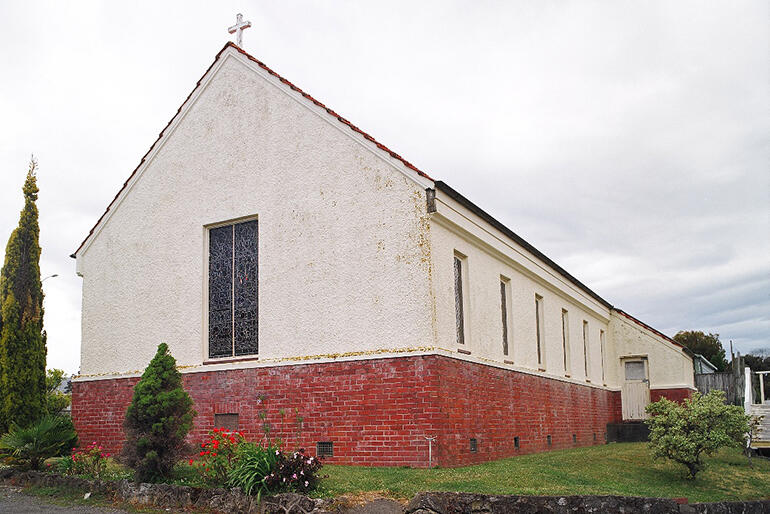
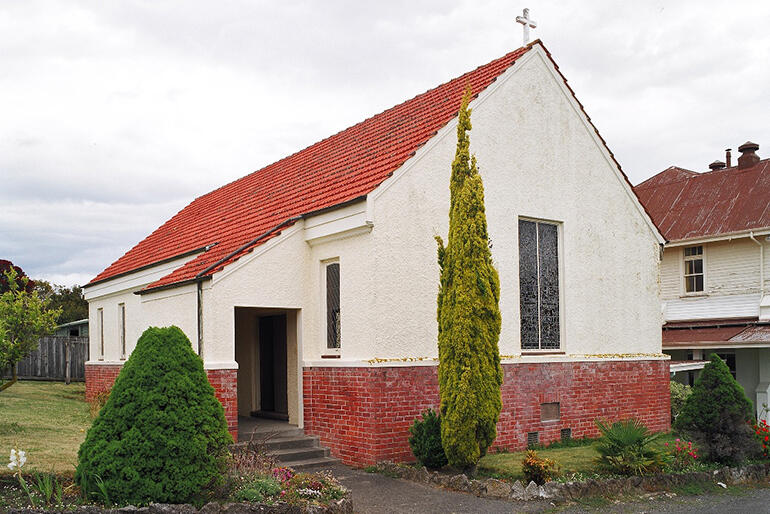
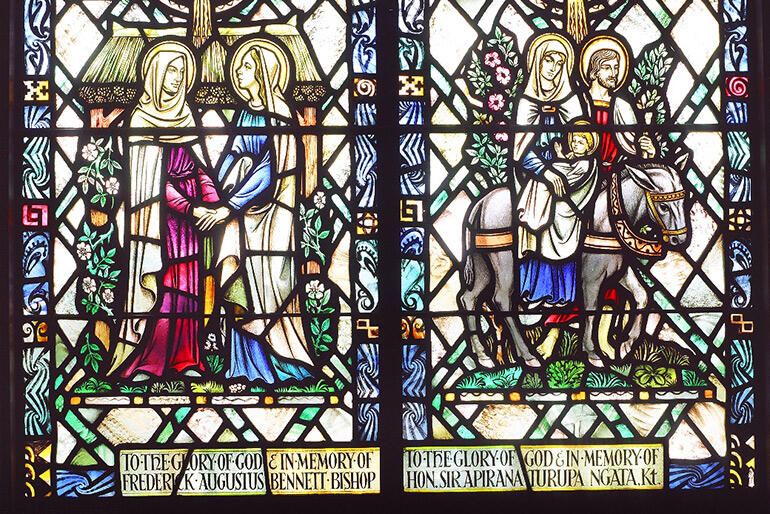
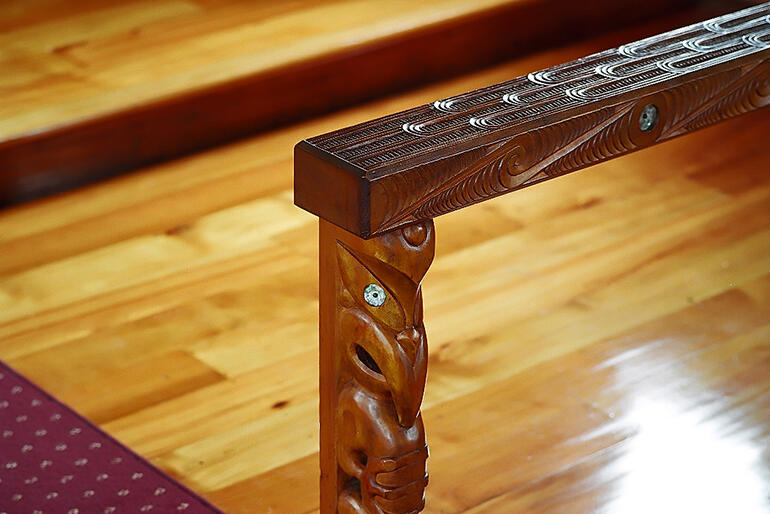
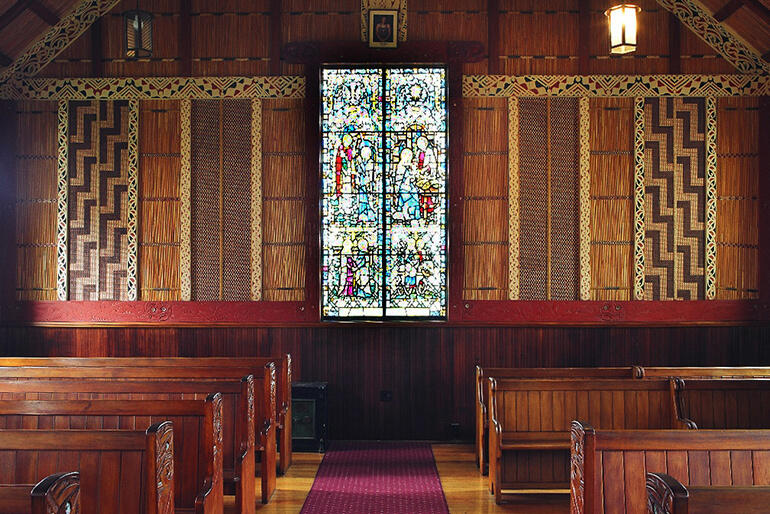
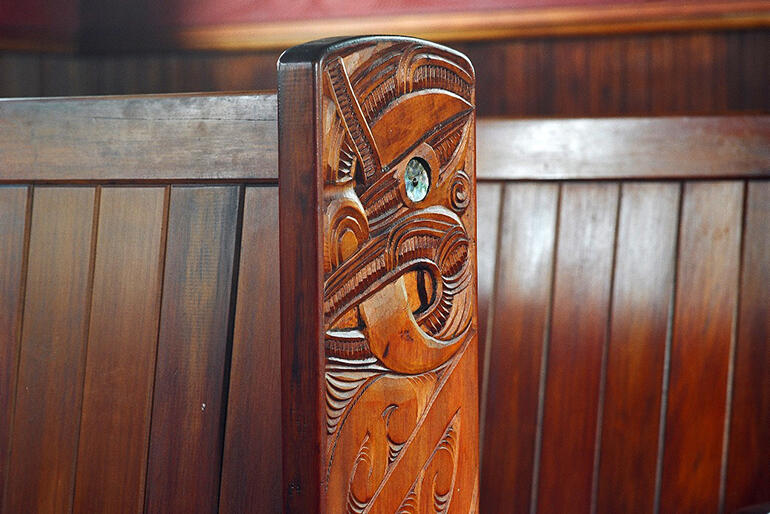
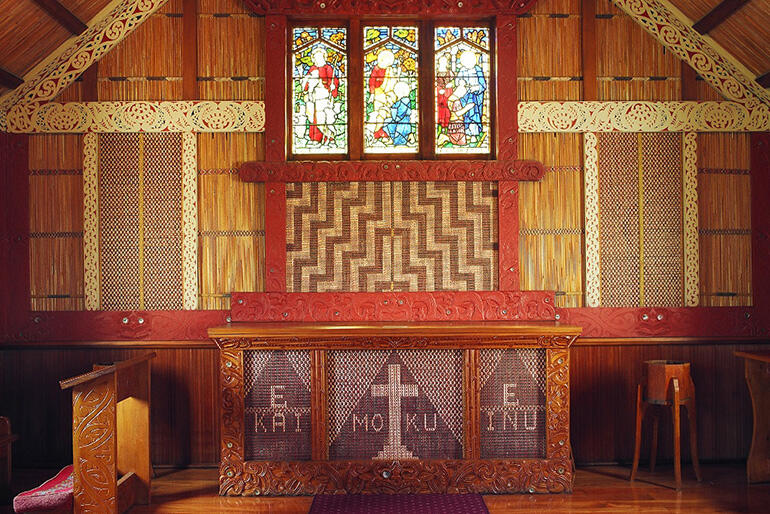
For too long, Hukarere Girls’ College has been a church school without a church.
In April 2003, Hukarere quit the site it had occupied in Napier since 1912, and moved to its present site in Eskdale.
But the school chapel never made the journey from 46 Napier Terrace to Shaw Rd, Eskdale. It was demolished.
And the whakairo, tukutuku and kowhaiwhai which had adorned that chapel – and which has been described as some of the finest anywhere[1] – was removed and stored in shipping containers.
For the last 13 years the school gymnasium has served as a makeshift chapel – put away the basketballs, bring out the prayer books – and the carving, panelling and painted scroll-work beams have stayed in shipping containers on the Eskdale site.
Changes for good
At long last, that limbo, that church-school-without-a-church status, is about to change.
Fundraising will begin in the new year for the building of a new St Michael and All Angels’ Chapel – and the long-stored taonga will again elevate the school’s worship.
Te Aute Trust Board Chairman Stephen Jacobi unveiled the concept for the new chapel at the recent Hukarere annual prizegiving.
This concept, which has been prepared by Gisborne conservation architect James Blackburne, sees the chapel being developed in two stages.
Stage 1 will deliver a new Hukarere chapel with the same footprint and a similar form to the old Napier chapel, thus allowing the taonga to be installed in their original configuration.
The main change will be the creation of a larger and separate vestry room for the chaplain, which will be connected to the chapel via a glassed linkway.
But whereas the previous chapel had a plain, almost nondescript exterior – the riches were all inside – this new one should reveal more of its true nature to the passer-by.
Taniko pattern?
It’ll have amo amo which extend well beyond the eaves to the ground and, if funds allow, roof tiles laid in a taniko pattern.
The cost to deliver stage I is $1.2 million.
Stage 2, which will happen if funds permit, will cost an extra $300K to $500K.
This would see the closed gable end of the chapel being opened, wharenui-style, and the roof extended.
So entry to the stage 2 chapel would then be via a ‘front door’ off the mahau, rather than the side entrance, as per the original chapel, and the stage 1 configuration.
The development of stage 2 would also see the chapel becoming a multi-functional space, suitable for powhiri, to stage kapa haka or to serve as a wharenui.
The money question
So where will the money come from?
Stephen Jacobi told the Hukarere prize giving that the Te Aute Trust Board (TATB) has set aside $650,000 for the project.
“The balance of up to $1 million,” he said, “will have to be raised from the community.”
He said the TATB had contracted a fundraising firm to make overtures to funders like the Lotteries Commission, the Eastland Community Trust and other major trusts.
But where fundraising for the chapel itself is concerned, Stephen has no doubts about who should do the heavy lifting:
“The thing with chapels is – we have to build them.
“The broader community may help us build a place to house the taonga, and a multi-functional space.
“But no-one else is going to help us build a chapel.
“The church has to build the chapel. And we want to engage with the church next year to seek their support for this. This is a wonderful way for parishes and dioceses to help the cause of Anglican education for young Maori women.”
By when, then?
So when will the building begin?
That depends, says Stephen, on how well the fundraising goes.
“We expect that process to take 18 months to two years. We will only begin building when we have the money in hand.”
It’s not a case of maybe, though. He’s determined to see the chapel through to its completion.
Stephen has just completed his four-year term as chairman of the St John’s College Trust Board (and therefore, since November 2013, also as chair of the Te Aute Trust Board).
He is prepared to stay on the SJCTB for a further 12 months.
But he’s not fixing an end date for his work for the TATB.
“I will continue there,” he says, “until we have completed the job that we set out to do – which is to restore these schools.”
#
Hukarere, at a glance:
- July 1875: Hukarere Native School for Girls (as it was then known) opens in a house on Hukarere Rd, Napier. Bishop William Williams’ daughter, “Miss Maria” Williams, is the first superintendent. The school starts with just seven students, but within two years the roll has jumped to 60.
- October 1910: The Hukarere Rd school buildings are destroyed by fire.
- July 1912: Hukarere Girls’ School re-opens on a larger site at 46 Napier Terrace.
- February 9, 1931: The school is badly damaged in the Napier earthquake. The students relocate to Auckland while the school is repaired. It reopens the following year.
- Towards the end of his life, Sir Apirana Ngata had made the first sketches for the design of the chapel on the back of an envelope, and he paced out the dimensions on site. According to Te Ao Hou¸ Sir Apirana had “planned the chapel with a Pakeha exterior and a Maori interior.” He had sent his own daughters to Hukarere, and several of his granddaughters have also attended there.
- Sir Apirana’s widow, Hene Lady Ngata, and Mrs R Paenga, supervised the decoration of the interior of the chapel. Most of the carving was done in Gisborne by John Taiapa, with help from Derek Mortis, Riki Smith and Bill Paddy. It was then sent to Napier by coastal steamer. The kowhaiwhai work was done in situ by Jack Kingi.
- The St Michael and All Angels’ Chapel is consecrated on November 1, 1953 by the then Bishop of Waiapu, Norman Lesser.
- By the late 1960s, the Te Aute-Hukarere Trust Board had come under severe financial pressure – and in 1969 it closes the school, while keeping the hostel open, with students attending Napier Girls’ High.
- In 1991, the trust board closes the hostel as well, and Hukarere is in recess. Most of the Hukarere girls move to Te Aute College, which becomes co-educational. The tukutuku panels, whakairo and kowhaiwhai in the chapel are dismantled and put in storage, where they remain.
- In 2001 the old Hukarere school buildings are deemed unsafe, and a search begins for another location.
- April 2003 Hukarere opens at its present Herepoho, Eskdale site, just outside the Napier city limits.
- In November 2013, Te Pihopatanga passes a resolution welcoming a proposal for the St John’s College Trust Board to take over the trusteeship of Hukarere and Te Aute. Without their intervention the schools were in imminent danger of closure.
- The new Te Aute Trust Board commits itself to building a new chapel for Hukarere.
- The present day roll at Hukarere stands at 90, with 69 boarders.
[1] http://teaohou.natlib.govt.nz/journals/teaohou/issue/Mao03TeA/c15.html






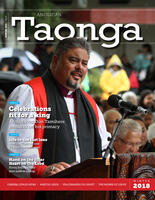
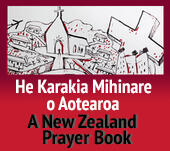









Comments
Log in or create a user account to comment.